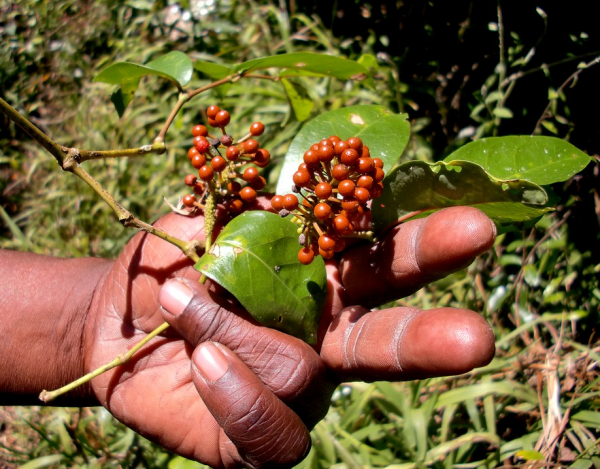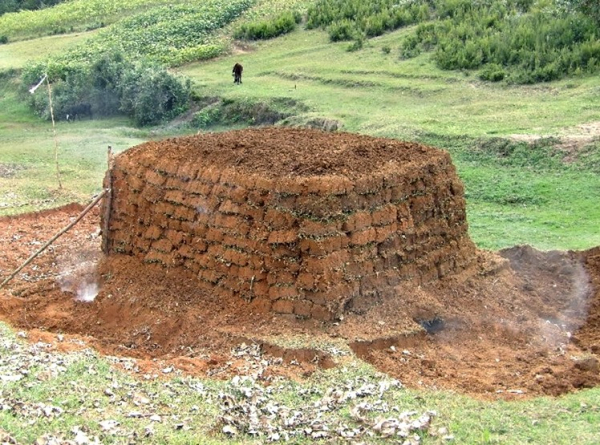Results & impact 28 October 2025
- Home
- CIRAD news
- News
- Deforestation in Madagascar: balancing development and biodiversity
Deforestation in Madagascar: balancing development and biodiversity conservation

“Madagascar was known as the Red Island, but it will now be the Green Island thanks to our national reforestation plan”, said the President of Madagascar Andry Rajoelina during the third One Planet Summit on 14 March. The Head of State has undertaken to reforest 40 000 hectares every year. This plan is welcomed by Plinio Sist, Director of the Forests and Societies research unit at CIRAD, who adds that the “Republic of Madagascar has committed to restoring 4 million hectares of forest by 2030 in the framework of the AFR100 initiative, African Forest Landscape Restoration Initiative ”.
A difficult context
In Madagascar, forest issues are a growing concern in the context of global changes. The Malagasy population is expected to double between 2015 and 2050. This population will need arable land to feed itself as well as wood and charcoal, which are currently the main sources of fuel on the island. In this context, CIRAD and its partners have launched a long-term process to reduce pressure on natural forests. Actions are conducted in particular within the framework of the Forests and Biodiversity in Madagascar platform in partnership for research and training.
Identifying priority conservation and restoration areas
“One key objective is protecting the remaining natural forests and focusing conservation efforts on priority areas”, says Ghislain Vieilledent, an ecologist at CIRAD and coordinator of the BioSceneMada project (Biodiversity scenarios under the effect of climate change and future deforestation in Madagascar). This project will provide policy makers with maps indicating priority areas for biodiversity conservation*. These maps will also identify strategic areas for the creation of forest corridors in order to facilitate forest restoration.
Balancing agricultural production and forest management
The restoration of landscapes and ecosystem services linked to wooded areas is central to several other projects in which CIRAD is involved in Madagascar. According to Jean-Marc Bouvet, a researcher at CIRAD and coordinator of the Forests and Biodiversity in Madagascar platform in partnership, “to ensure forest restoration and conservation are effective and sustainable, they need to interact positively with agriculture”.
Sectoral approaches have shown their limitations and protecting forest areas today also means taking account of agricultural activities in order to propose alternatives to slash-and-burn farming and to integrate trees and biodiversity into cultivated areas. This is the goal of the Sustainable Agriculture through Landscape Management project (PADAP) involving experts from CIRAD, which develops a multisectoral participatory approach to the planning and management of agricultural and forest socio-ecosystems.
CIRAD and its partners in Madagascar also adopt agro-ecological intensification principles to take account of the major export sectors linked to trees (lychees, cloves, etc.), forest crops such as vanilla or those developed through gathering practices such as wild pepper (DOMETSIP project) in order to balance agriculture with the protection of wooded areas.
Accompanying fuelwood production
Another challenge to limit forest degradation is developing forest plantations, especially for the production of fuelwood. Almost 90 % of the Malagasy population uses wood and charcoal as domestic fuel. Forest plantations, which are largely restricted to marginal areas unsuitable for farming and resistant to bush fires, have a growing impact on the rural economy. In this field, CIRAD coordinates the Arina project – Integrated forest management and reforestation of Anjozorobe district. “The goal is to accompany rural populations along the chain, from forest plantations to the sale of charcoal, via carbonisation and energy efficiency”, says Jean-Pierre Bouillet, coordinator of Arina. The researchers estimate that between 30 000 and 60 000 ha of natural forest are saved every year thanks to fuelwood plantations in the Antananarivo region alone.
*These priority areas concern biodiversity hotspots and climate refuges that are at high risk of deforestation.
BioSceneMada
Partners: CIRAD, ETC Terra, ONE, Rebioma, WCS
Funding: FFEM, FRB
PADAP
Implementation: Malagasy Ministries of Agriculture and Livestock (MAE), of the Environment and Sustainable Development (MEDD) and of Water, Sanitation and Hygiene (MEAH)
Funding: World Bank, AFD, The Global Environmental Fund
DOMETSIP
Implementation: CIRAD
Funding: European Union, Indian Ocean Commission
Arina
Partners: CIRAD, FOFIFA, Association Partage
Funding: European Union






























